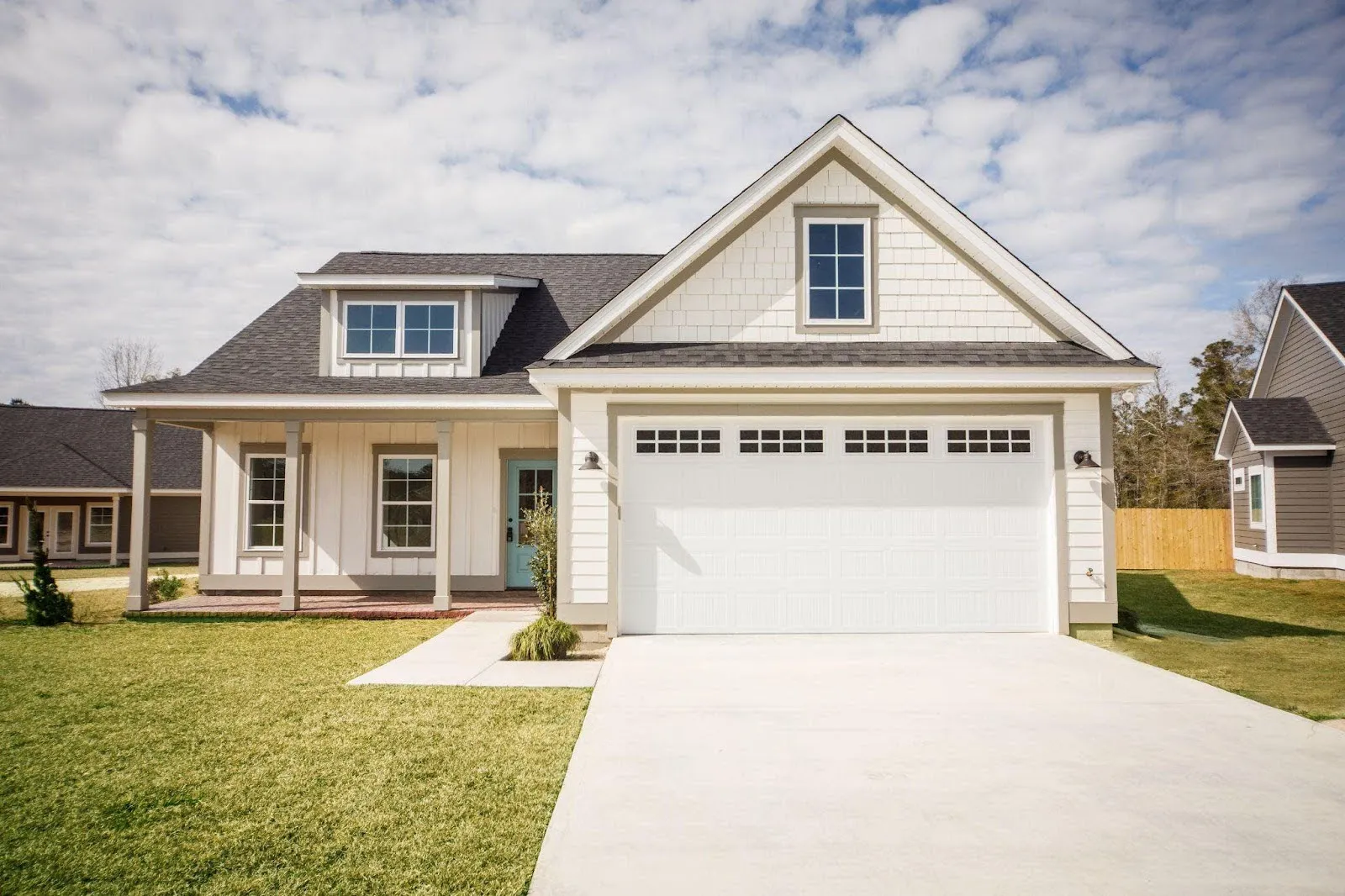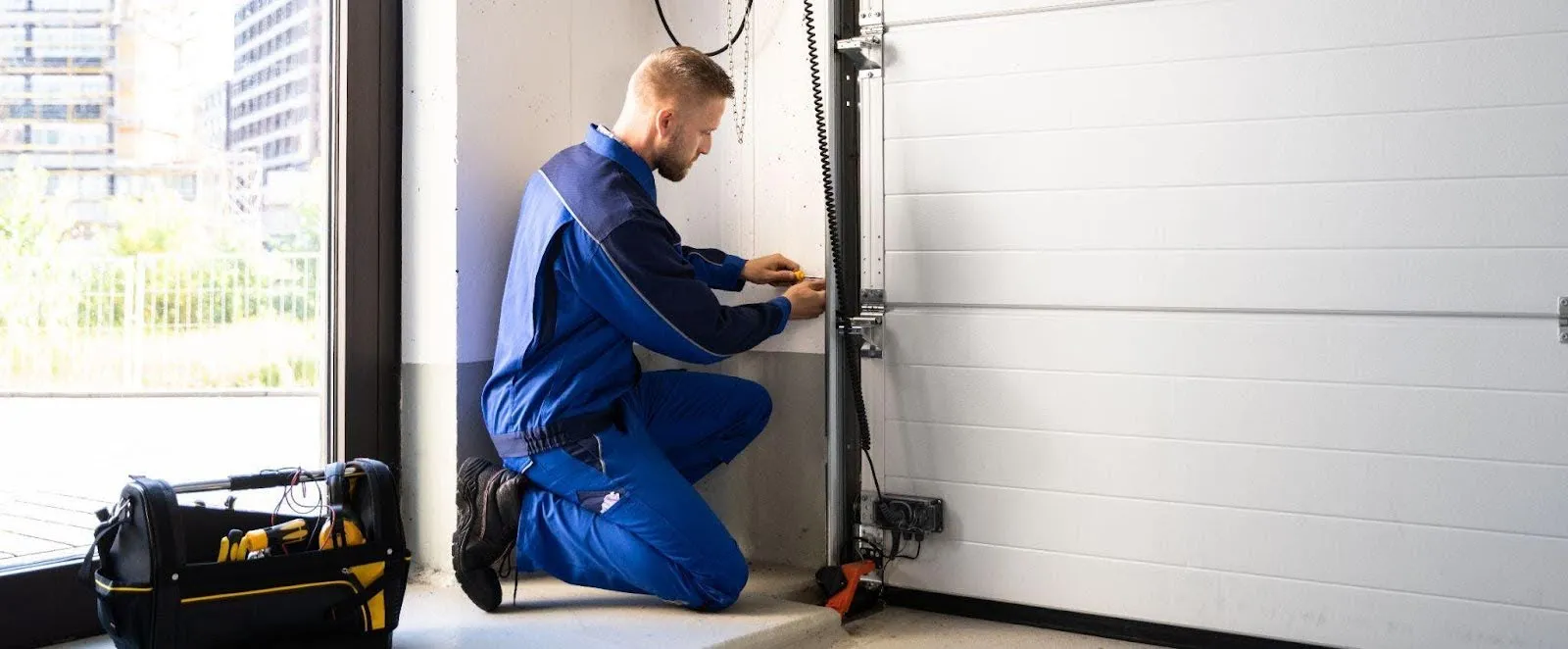We’re here to help you recognize the key warning signs that your garage door needs repair. Your garage door protects your home, provides security, and makes daily life more convenient.
As one of the largest moving parts in your home, it ensures easy access to your garage and safeguards your belongings. When your garage door works properly, you barely notice it. However, the moment it malfunctions, it disrupts your routine and creates safety risks.
Homeowners often deal with issues like strange noises, slow operation, or doors that refuse to open or close. These problems might seem minor initially, but ignoring them leads to costly repairs, safety hazards, or even total door failure.
By addressing these issues early, you keep your door operating smoothly and ensure the safety and security of your home. Whether you notice loud noises, balance problems, or remote malfunctions, this guide will show you how to tackle the issue before it worsens.
Loud or unusual noises
Loud or unusual noises from your garage door signal a problem that needs immediate attention. Grinding, squeaking, or rattling sounds disrupt the smooth operation and often indicate underlying issues.
Grinding noises often result from worn-out rollers or metal parts rubbing together without lubrication. This friction causes unnecessary wear and leads to more serious damage if ignored. Squeaking usually points to a lack of lubrication on hinges, springs, or tracks.
Without lubrication, these components strain to move, putting extra stress on the system. Rattling often comes from loose bolts, brackets, or other hardware, creating instability in the door’s operation.
Ignoring these sounds risks further damage and increases repair costs. What starts as a minor annoyance escalates into a significant issue or even a safety hazard. These noises indicate that your door needs adjustments, part replacements, or a thorough inspection.
Call a professional garage door technician when your door makes these noises. A trained technician will pinpoint the problem, secure loose components, replace worn parts, and apply proper lubrication. Addressing the issue quickly keeps your door running smoothly and prevents more extensive damage.
Slow or uneven movement
A garage door that moves slowly or operates unevenly signals a problem that needs immediate attention. Delayed response, jerky motions, or a door that stops mid-operation disrupts your routine and affects the system’s performance.
Slow or uneven movement often stems from mechanical issues. A sluggish motor may struggle to lift the door smoothly, causing delays. Misaligned tracks force the door to catch or wobble, creating uneven movement and straining the system. Damaged springs, which bear the door’s weight, make the door feel unbalanced or cause it to move awkwardly.
Ignoring these issues increases strain on the motor, tracks, and springs, leading to more severe damage. An overworked motor risks burning out, while misaligned tracks bend further, complicating repairs.
Act quickly to restore smooth operation and prevent costly repairs. Professional garage door technicians identify the root cause, realign tracks, replace worn springs, or repair motors to keep your garage door functioning efficiently. Addressing these problems early saves you time, money, and stress.
Door won’t open or close properly
When your garage door refuses to open or close, it disrupts your routine and indicates a serious issue. Whether the door gets stuck halfway, reverses unexpectedly, or doesn’t respond to controls, you need to address the problem immediately to ensure functionality and safety.
Misaligned sensors often cause the door to stop or reverse. If sensors fail to detect objects or sense obstructions incorrectly, the door won’t close properly. A faulty opener causes inconsistent operation, making the door slow or unresponsive. Broken or frayed cables, which support the door’s weight, leave it stuck or moving unevenly.
Delaying repairs creates more problems. A stuck door compromises your home’s security, while an unexpected reversal causes injuries or damage. Ignoring these issues also strains the garage door system, leading to higher repair costs and potential failure.
Contact a professional to resolve these issues quickly. Technicians realign sensors, repair openers, and replace damaged cables to restore smooth, reliable operation. Prompt action keeps your garage door functioning safely and protects your home from unnecessary risks.
Visible damage

Dents, cracks, or warped panels on your garage door affect more than its appearance — they disrupt functionality, reduce insulation, and lower curb appeal. Addressing visible damage quickly ensures your door operates efficiently and keeps your home looking great.
Dents often cause the door to stick or move unevenly, interfering with smooth operation. Cracks and warped panels allow drafts and moisture to enter, compromising insulation and creating an uncomfortable space. Warped panels also weaken the door’s structure, increasing the risk of further damage and costly repairs.
Choose between repair and replacement depending on the severity of the damage. Professionals fix minor dents and cracks without replacing the entire door.
However, severe warping or multiple damaged panels often require replacement to restore the door’s strength and functionality. Replacing damaged parts or upgrading to a modern design improves insulation and enhances your home’s curb appeal.
Contact a professional garage door technician to evaluate the damage and recommend the best solution. Technicians repair small issues, replace damaged sections, or help you select a new door that fits your needs. Acting quickly ensures your garage door remains secure, functional, and visually appealing.
Increased energy bills
A damaged or poorly insulated garage door drives up your energy bills by letting drafts in and conditioned air out. If your garage feels too hot in the summer or too cold in the winter, your door likely contributes to the problem. Fixing these issues helps you control energy costs and improve your home’s efficiency.
Cracks, gaps, or worn weather stripping on your garage door allow air to seep through, forcing your HVAC system to work harder to maintain a stable temperature. This extra strain raises your energy bills and shortens the lifespan of your heating and cooling systems.
Look for signs like daylight peeking through edges, noticeable drafts, or sudden spikes in energy costs to identify insulation problems.
Leaving these issues unaddressed creates bigger problems. Poor insulation doesn’t merely inflate energy bills — it makes adjacent living spaces uncomfortable and exposes your garage to moisture and pests. Replacing worn weather stripping, repairing damaged panels, or upgrading to an insulated garage door boosts energy efficiency and comfort.
Ask a professional to evaluate your garage door’s insulation and recommend solutions. Technicians seal gaps, repair damage, or install energy-efficient upgrades, keeping your garage and energy costs under control.
Door feels heavy or unbalanced
A heavy or unbalanced garage door signals a problem that needs immediate attention. An unbalanced door makes manual operation difficult and strains the opener, increasing the risk of damage.
Test your door’s balance easily. Pull the emergency release cord to disconnect the opener, then lift the door manually to about halfway. A balanced door stays in place, while an unbalanced door may sag, slam shut, or feel heavy. These issues often result from worn springs or frayed cables that no longer support the door’s weight properly.
Ignoring balance problems creates serious risks. Worn springs or cables may snap suddenly, causing the door to fall and potentially injure someone. An unbalanced door also puts excessive stress on the opener, leading to motor failure and expensive repairs.
Call a professional as soon as you notice balance issues. Technicians replace worn springs, repair damaged cables, and realign the door to restore safe, smooth operation. Fixing these problems promptly protects your family, prevents further damage, and ensures reliable performance.
Remote or keypad malfunctions
A malfunctioning garage door remote or keypad disrupts your routine and signals a problem that needs immediate attention. Intermittent operation or no response often points to an underlying issue.
Dead batteries frequently cause remote and keypad issues, so replace them first. Connectivity problems, such as interference or misaligned sensors, can also stop your door from responding. If both the remote and keypad fail simultaneously, the opener itself may have a mechanical or wiring issue.
Start by troubleshooting simple problems. Replace batteries and confirm that the remote or keypad is properly synced with the opener. Clear any obstructions and check for interference between sensors and the opener. If these steps don’t resolve the issue, the problem likely lies within the opener.
Contact a professional garage door technician if troubleshooting doesn’t work. Technicians diagnose complex problems, repair faulty openers, and ensure the entire system functions properly. Acting quickly restores your garage door’s reliability and prevents further inconvenience.
Gaps, drafts, or light coming through
Gaps around the edges of your garage door let in drafts, reduce energy efficiency, and weaken your home’s security. If you notice light coming through or feel air seeping in, check for worn weather stripping or alignment issues.
Weather stripping seals the edges of your garage door, blocking drafts, moisture, and pests. Over time, it cracks, peels, or shifts out of place, leaving openings for outdoor air. Misaligned tracks or a door that doesn’t close fully also create gaps, compromising insulation and security.
These problems affect more than comfort. Drafts force your HVAC system to work harder, increasing energy bills and straining equipment. Gaps invite pests and expose your garage to moisture, which can damage belongings and create maintenance headaches. They also make it easier for intruders to tamper with the door, reducing security.
Fix minor weather stripping issues yourself by replacing damaged strips and ensuring they fit snugly along the door’s edges. If the gaps stem from alignment problems or significant wear, call a professional. Technicians realign tracks, replace worn parts, and install high-quality weather stripping to create a tight seal.
Seal gaps and drafts promptly to improve energy efficiency, strengthen security, and keep your garage comfortable year-round. Whether you handle the repair yourself or hire a professional, addressing the issue protects your home and lowers long-term costs.

Experience the best with A-1 Garage Door Repair
If your garage door needs repair, choose A-1 Garage Door Repair for expert service. Our skilled technicians handle repairs and maintenance with precision, restoring your door’s performance and extending its lifespan.
Don’t let small problems grow into major issues. Contact A-1 Garage Door Repair today for fast, reliable solutions, and enjoy peace of mind with a fully functional garage door.

